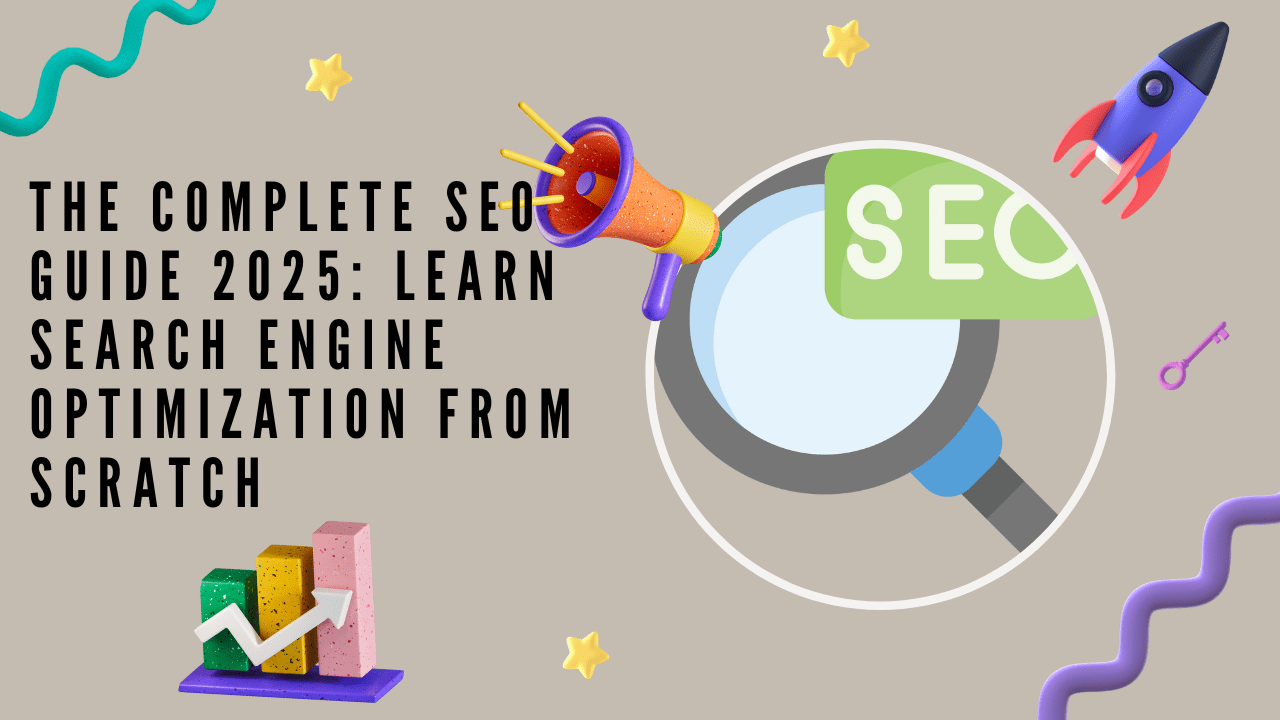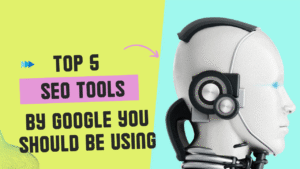Have you ever searched for something on Google and clicked on one of the top links without thinking twice? That’s the power of SEO—Search Engine Optimization. It decides which websites rank at the top and which get buried on page two or beyond. If you want your website to attract visitors, generate leads, or grow your online presence, understanding SEO is essential.
This guide covers SEO from beginner to advanced level. Whether you’re a student, blogger, small business owner, or digital marketer, this post will answer all your questions.
What is SEO?
Table of Contents
ToggleSEO is the practice of improving your website so that it ranks higher in search engine results. It’s not just about search engines—SEO is also about providing a better experience to users.
When you optimize your site, you’re making it easier for people to find you when they search for relevant terms. Good SEO increases your visibility, builds trust, and helps drive traffic to your website organically—without paid ads.
How Search Engines Work?
Search engines like Google use automated bots, also known as crawlers, to explore the web. These crawlers collect data from websites and store it in a massive index. When someone searches for a query, the search engine analyzes its index and returns the most relevant pages.
Three key steps occur:
- Crawling – Bots scan websites and follow links.
- Indexing – Pages are stored in a database.
- Ranking – Algorithms decide which pages appear first based on many factors.
Understanding how search engines work gives you a better idea of what you need to optimize.
Core Components of SEO
SEO isn’t one fixed method; it’s a combination of different strategies. Here are the three main categories:
1. On-Page SEO
On-page SEO refers to all the elements you control on your website. This includes content, structure, and code.
Some key elements:
- Using relevant keywords in content and headings
- Writing clear and compelling meta titles and descriptions
- Organizing content with proper headings (H1, H2, etc.)
- Optimizing images with alt text and compression
- Maintaining clean, readable URLs
But on-page SEO isn’t just about keywords—it’s about providing helpful, quality content that satisfies the user’s search intent.
2. Off-Page SEO
This focuses on improving your site’s authority and trust through external signals. The most important factor is backlinks—links from other websites to yours.
Earning backlinks from trusted sources tells search engines that your content is valuable. Guest posting, public relations, and industry partnerships can help in this area.
3. Technical SEO
This ensures that search engines can properly crawl and index your site. It also involves improving the site’s performance for users.
Key considerations include:
- Fast page load times
- Mobile responsiveness
- Secure connections using HTTPS
- A structured sitemap and robots.txt file
- Fixing crawl errors and broken links
Technical SEO works behind the scenes but has a big impact on rankings and user experience.
Getting Started with SEO (Beginner Level)
If you’re just starting out, focus on the basics:
Keyword Research: This is the foundation of SEO. You need to know what people are searching for before you create content. Use tools like Google Keyword Planner or Ubersuggest to find search terms with good volume and low competition.
Content Creation: Once you’ve found the right keywords, start writing helpful content. Avoid stuffing keywords—use them naturally in your headings and paragraphs. Focus on solving the user’s problem, and make sure your writing is clear and engaging.
Meta Tags and URLs: The title and description of your page should be unique and include your main keyword. Keep URLs short and meaningful—avoid numbers or symbols.
Basic Link Building: Share your content on social media, reach out to bloggers, or list your site in directories to build your first backlinks.
Moving to Intermediate SEO
Once you’ve grasped the basics, it’s time to level up.
Internal linking becomes important here. Linking to other relevant pages on your site helps both users and search engines navigate easily. It also distributes authority across your pages.
You should also begin optimizing for mobile users. Google uses mobile-first indexing, which means it primarily looks at your mobile version. If your website doesn’t work well on phones, your rankings will suffer.
Don’t ignore website speed either. Users don’t wait. Optimize images, enable browser caching, and reduce unnecessary scripts.
Also, keep an eye on your performance. Use Google Search Console to track your rankings, monitor issues, and submit your sitemap.
Advanced SEO Techniques
At this stage, your goal is to fine-tune performance and dominate your niche.
One important strategy is content clustering. Instead of writing random articles, build pillar content around a central topic and support it with related subtopics. This improves topic authority.
You should also implement schema markup (structured data) to enhance your listings in search results. For example, if you run a recipe blog, schema can display cooking time and ratings directly in Google results.
Monitoring Core Web Vitals is another advanced step. These are user experience metrics that include:
- Largest Contentful Paint (LCP): Measures loading time
- First Input Delay (FID): Measures interactivity
- Cumulative Layout Shift (CLS): Measures visual stability
Finally, conduct regular SEO audits. Use tools like Screaming Frog or SEMrush to identify broken links, duplicate content, and other technical issues.
How Long Does SEO Take to Show Results?
This is one of the most common questions. SEO is not a quick fix—it’s a long-term investment. Typically, results start showing in 3 to 6 months, but significant improvements can take longer.
The timeline depends on:
- Your industry’s competition
- The quality of your content
- The strength of your backlinks
- The current state of your website
Patience and consistency are key.
SEO Tips for Local Businesses
If you’re targeting a local audience, here are some steps to boost local visibility:
- Create and verify your Google Business Profile.
- Use local keywords like “plumber in Pune” or “CA firm near me”
- Get listed in local directories
- Collect positive reviews from customers
- Add your business location on the website and use schema markup
Local SEO helps attract nearby customers, especially on mobile devices.
Common SEO Mistakes to Avoid
Many beginners make mistakes that can harm their rankings. Here are a few to watch out for:
- Writing content only for search engines, not for readers
- Ignoring title tags and meta descriptions
- Using broken or outdated links
- Duplicating content across pages
- Failing to optimize for mobile users
Avoid these issues by regularly reviewing your site and staying updated on best practices.
Conclusion
SEO is not a one-time task—it’s a continuous process of improving your website’s quality and visibility. Start with the basics, be consistent with your efforts, and always focus on providing value to your users. As your understanding grows, so will your website’s ranking.
If you’re serious about growing your online presence, SEO is a skill worth mastering. Begin today—and let your results grow tomorrow.
👉 Want to explore more tips, tutorials, and in-depth SEO strategies?
Visit our blog page here: Read More SEO Blogs
Frequently Asked Questions
SEO is the process of making your website better so that it ranks higher on search engines and gets more visitors.
No. Most SEO tasks can be done without any coding knowledge. However, understanding basic HTML can help.
You don’t have to pay search engines to rank your site, but you may invest time or hire experts for better results.
Look for keywords with decent search volume, low competition, and relevance to your content.
Yes. With the right knowledge and tools, you can manage SEO for your own website.
Regular updates help. Try to review key pages every 3–6 months and keep your blog active.
On-page SEO refers to changes made on your website, like content and keywords. Off-page SEO involves things done outside your site, like link-building.
Backlinks are links from other websites to yours. They are important because they show search engines that your site is trusted and valuable.




